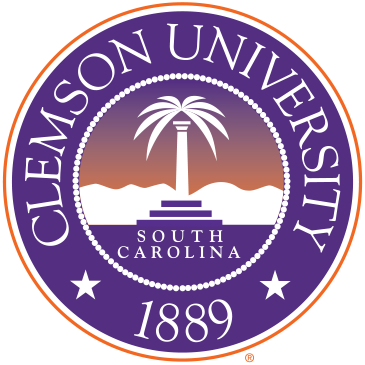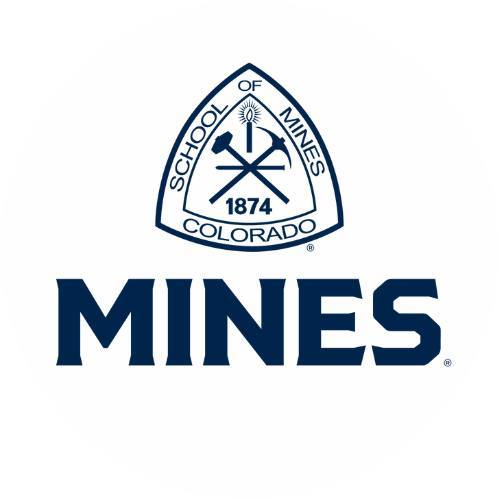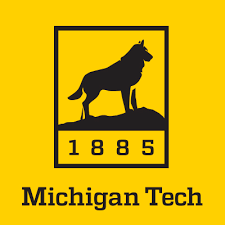36 Best Colleges for Environmental Engineering – 2024
April 16, 2024

With environmental crises all over the globe, the need for environmental engineers has never been greater. Individuals who pursue this course of study steep themselves in the knowledge of engineering, biology, and chemistry with an eye toward solving environmental problems. The best programs for environmental engineering offer undergraduate students a multitude of opportunities for hands-on learning, direct interaction with distinguished faculty, and access to laboratories stocked with the latest scientific equipment. The colleges and universities that we selected for our Best Colleges for Environmental Engineering meet these criteria and are exceptional places to become the next wave of steward-scientists.
Methodology
Click here to read our methodology for the Best Colleges for Environmental Engineering.
Salary Information
Want to know how much money graduates of the best environmental engineering colleges make when they begin their careers? For each college listed (and hundreds of additional schools), you can view the starting salaries for environmental engineering majors.
Best Colleges for Environmental Engineering
Here’s a quick preview of the first environmental engineering institutions that made our list. Detailed profiles and stats can be found when you scroll below.
1) Georgia Institute of Technology
2) Cornell University
3) Massachusetts Institute of Technology
4) University of Michigan-Ann Arbor
5) Northwestern University
6) Purdue University-Main Campus
7) Johns Hopkins University
8) Stanford University
9) Columbia University
10) The University of Texas at Austin
All of the schools profiled below have stellar reputations in the field of environmental engineering and commit substantial resources to undergraduate education. For each of the best environmental engineering colleges, College Transitions will provide you with—when available—the university’s:
We will also include a longer write-up of each college’s:
- Academic Highlights – Includes facts like student-to-faculty ratio, average class size, number of majors offered, and most popular majors.
- Professional Outcomes – Includes info on the rate of positive outcomes, companies employing alumni, and graduate school acceptances.

Georgia Institute of Technology
- Atlanta, GA
Academic Highlights: Georgia Tech’s engineering and computer science programs are at the top of any “best programs” list. Being a large research university, the student-to-faculty ratio is a less-than-ideal 22:1, leading to some larger undergraduate class sections. In fact, 49% of courses had enrollments of more than thirty students in 2022-23. On the other end of the spectrum, 8% of sections had single-digit enrollments. In terms of total number of degrees conferred, the most popular areas of study are engineering (51%), computer science (21%), and business (9%).
Professional Outcomes: More than three-quarters of recent grads had already procured employment by the time they were handed their diplomas. You will find graduates at every major technology company in the world. The median salary reported by that group was $80,000. Many remain on campus to earn advanced engineering degrees through Georgia Tech, but the school’s reputation is such that gaining admission into other top programs including MIT, Carnegie Mellon, Berkeley, Stanford, and Caltech.
- Enrollment: 18,416
- Cost of Attendance: $29,950 (In-State); $52,120 (Out-of-State)
- Median SAT: 1470
- Median ACT: 33
- Acceptance Rate: 17%
- Retention Rate: 98%
- Graduation Rate: 93%

Cornell University
- Ithaca, NY
Academic Highlights: A diverse array of academic programs includes 80 majors and 120 minors spread across the university’s seven schools/colleges. Classes are a bit larger at Cornell than at many other elite institutions. Still, 55% of sections have fewer than 20 students. Most degrees conferred in 2022 were in computer science (17%), engineering (13%), business (13%), and biology (13%). The SC Johnson College of Business houses two undergraduate schools, both of which have phenomenal reputations.
Professional Outcomes: Breaking down the graduates of the College of Arts and Sciences, the largest school at Cornell, 68% entered the workforce, 28% entered graduate school, 1% pursued other endeavors such as travel or volunteer work, and the remaining 3% were still seeking employment six months after receiving their diplomas. The top sectors attracting campus-wide graduateswere financial services (18%), technology (17%), consulting (15%), and education (10%). Of the students from A&S going on to graduate school, 15% were pursuing JDs, 5% MDs, and 22% PhDs.
- Enrollment: 15,735
- Cost of Attendance: $88,150
- Median SAT: 1520
- Median ACT: 34
- Acceptance Rate: 7%
- Retention Rate: 97%
- Graduation Rate: 95%

Massachusetts Institute of Technology
- Cambridge, MA
Academic Highlights: Undergraduates pursue one of 57 majors and 59 minors at this world-class research institution that continues to be one of the world’s most magnetic destinations for math and science geniuses. The student-to-faculty ratio is an astonishing 3-to-1, and over two-fifths of all class sections have single-digit enrollments, and 70% of courses contain fewer than twenty students. The highest numbers of degrees conferred in 2022 were in the following majors: engineering (31%), computer science and engineering (28%), mathematics (10%), and the physical sciences (7%).
Professional Outcomes: The Class of 2023 saw 29% of its members enter the world of employment and 43% continue on their educational paths. The top employers included Accenture, Amazon, Microsoft, Goldman Sachs, Google, General Motors, the US Navy, Apple, Bain & Company, and McKinsey. The mean starting salary for an MIT bachelor’s degree holder was $95,000. The most frequently attended graduate schools are a who’s who of elite institutions including MIT itself, Stanford, Caltech, Harvard, and the University of Oxford.
- Enrollment: 4,657
- Cost of Attendance: $82,730
- Median SAT: 1550
- Median ACT: 35
- Acceptance Rate: 4%
- Retention Rate: 99%
- Graduation Rate: 95%

University of Michigan
- Ann Arbor, MI
Academic Highlights: There are 280+ undergraduate degree programs across fourteen schools and colleges, and the College of Literature, Science, and the Arts (LSA) enrolls the majority of students. The Ross School of Business offers highly rated programs in entrepreneurship, management, accounting, and finance. The College of Engineering is also one of the best in the country. By degrees conferred, engineering (15%), computer science (14%), and the social sciences (11%) are most popular. A solid 56% of classes have fewer than 20 students.
Professional Outcomes: Within three months of graduating, 89% of LSA grads are employed full-time or in graduate school, with healthcare, education, law, banking, research, nonprofit work, and consulting being the most popular sectors. Within three months, 99% of Ross grads are employed with a median salary of $90k. Top employers include Goldman Sachs, Deutsche Bank, EY, Morgan Stanley, PwC, Deloitte, and Amazon. Within six months, 96% of engineering grads are employed (average salary of $84k) or in grad school. General Motors, Ford, Google, Microsoft, Apple, and Meta employ the greatest number of alumni.
- Enrollment: 32,695 (undergraduate); 18,530 (graduate)
- Cost of Attendance: $35,450 (in-state); $76,294 (out-of-state)
- Median SAT: 1470
- Median ACT: 33
- Acceptance Rate: 18%
- Retention Rate: 97%
- Graduation Rate: 93%

Northwestern University
- Evanston, IL
Academic Highlights: Northwestern is home to six undergraduate schools, including Medill, which is widely regarded as one of the country’s best journalism schools. The McCormick School of Engineering also achieves top rankings, along with programs in economics, social policy, and theatre. The social sciences account for the greatest number of degrees conferred (19%), followed by communications/journalism (13%), and engineering (11%). 45% of classes have nine or fewer students enrolled; 78% have fewer than twenty enrollees. 57% of recent grads had the chance to conduct undergraduate research.
Professional Outcomes: Six months after graduating, 69% of the Class of 2022 had found employment and 27% were in graduate school. The four most popular professional fields were consulting (18%), engineering (18%), business/finance (16%), and communications/marketing/media (13%). Employers included the BBC, NBC News, The Washington Post, NPR, Boeing, Google, IBM, Deloitte, PepsiCo, Northrop Grumman, and Goldman Sachs. Across all majors, the average starting salary was $73k. Of those headed straight to graduate school, engineering, medicine, and business were the three most popular areas of concentration.
- Enrollment: 8,659 (undergraduate); 14,073 (graduate)
- Cost of Attendance: $91,290
- Median SAT: 1530
- Median ACT: 34
- Acceptance Rate: 7%
- Retention Rate: 98%
- Graduation Rate: 97%

Purdue University — West Lafayette
- West Lafayette, IN
Academic Highlights: Purdue offers over 200 majors at ten discipline-specific colleges, and 38% of course sections have an enrollment of 19 or fewer. Engineering and engineering technologies majors earn 34% of the degrees conferred by the university; the College of Engineering cracks the top ten on almost every list of best engineering schools. The Krannert School of Management is also well-regarded by employers; 11% of degrees conferred are in business. Other popular majors include computer science (10%) and agriculture (5%)—both are incredibly strong.
Professional Outcomes: Shortly after receiving their diplomas, 70% of 2022 grads headed to the world of employment while 24% headed to graduate/professional school. The top industries entered by grads in recent years are (1) health care, pharmaceuticals, and medical devices; (2) finance, insurance, and consulting; (3) manufacturing and machinery; (4) airline, aviation, and aerospace. Companies employing the greatest number of recent alumni were Amazon, Deloitte, PepsiCo, Labcorp, Lockheed Martin, and Microsoft. The average starting salary was $68k across all degree programs.
- Enrollment: 37,949 (undergraduate); 12,935 (graduate)
- Cost of Attendance: $22,812 (in-state); $41,614 (out-of-state)
- Median SAT: 1330
- Median ACT: 31
- Acceptance Rate: 53%
- Retention Rate: 91%
- Graduation Rate: 84%

Johns Hopkins University
- Baltimore, MD
Academic Highlights: With 53 majors as well as 51 minors, JHU excels in everything from its bread-and-butter medical-related majors to international relations and dance. Boasting an enviable 6:1 student-to-faculty ratio and with 78% of course sections possessing an enrollment under 20, face time with professors is a reality. Many departments carry a high level of clout, including biomedical engineering, chemistry, English, and international studies. Biology, neuroscience, and computer science, which happen to be the three most popular majors, can also be found at the top of the national rankings.
Professional Outcomes: The Class of 2022 saw 94% of graduates successfully land at their next destination within six months of exiting the university; 66% of graduates entered the world of employment and a robust 19% went directly to graduate/professional school. The median starting salary across all majors was $80,000 for the Class of 2022. JHU itself is the most popular choice for graduate school. The next most frequently attended institutions included Columbia, Harvard, Yale, and MIT.
- Enrollment: 6,044
- Cost of Attendance: $86,065
- Median SAT: 1540
- Median ACT: 35
- Acceptance Rate: 7%
- Retention Rate: 97%
- Graduation Rate: 95%

Stanford University
- Palo Alto, CA
Academic Highlights: Stanford has three undergraduate schools: the School of Humanities & Sciences, the School of Engineering, and the School of Earth, Energy, and Environmental Sciences. 69% of classes have fewer than twenty students, and 34% have a single-digit enrollment. Programs in engineering, computer science, physics, mathematics, international relations, and economics are arguably the best anywhere. In terms of sheer volume, the greatest number of degrees are conferred in the social sciences (17%), computer science (16%), engineering (15%), and interdisciplinary studies (13%).
Professional Outcomes: Stanford grads entering the working world flock to three major industries in equal distribution: business/finance/consulting/retail (19%); computer, IT (19%); and public policy and service, international affairs (19%). Among the companies employing the largest number of recent grads are Accenture, Apple, Bain, Cisco, Meta, Goldman Sachs, Google, McKinsey, Microsoft, and SpaceX. Other companies that employ hundreds of Cardinal alums include LinkedIn, Salesforce, and Airbnb. Starting salaries for Stanford grads are among the highest in the country.
- Enrollment: 8,049 (undergraduate); 10,236 (graduate)
- Cost of Attendance: $87,833
- Median SAT: 1540
- Median ACT: 35
- Acceptance Rate: 4%
- Retention Rate: 98%
- Graduation Rate: 95%

Columbia University
- New York, NY
Academic Highlights: Columbia offers 100+ unique areas of undergraduate study as well as a number of pre-professional and accelerated graduate programs. Class sizes at Columbia are reasonably small and the student-to-faculty ratio is favorable; however, in 2022, it was revealed that the university had been submitting faulty data in this area. It is presently believed that 58% of undergraduate courses enroll 19 or fewer students. The greatest number of degrees are conferred in the social sciences (22%), computer science (15%), engineering (14%), and biology (7%).
Professional Outcomes: Examining the most recent graduates from Columbia College and the Fu Foundation School of Engineering & Applied Science, 73% had found employment within six months, and 20% had entered graduate school. The median starting salary for graduates of Columbia College/Columbia Engineering is above $80,000. Many graduates get hired by the likes of Amazon, Goldman Sachs, Morgan Stanley, Google, Citi, McKinsey, and Microsoft.
- Enrollment: 8,832
- Cost of Attendance: $89,587
- Median SAT: 1540
- Median ACT: 35
- Acceptance Rate: 4%
- Retention Rate: 98%
- Graduation Rate: 95%

The University of Texas at Austin
- Austin, TX
Academic Highlights: UT Austin offers over 150 majors, including those at the Cockrell School of Engineering, one of the most heralded undergraduate engineering schools around, and The McCombs School of Business, which dominates in the specialty areas of accounting and marketing. The computer science department is also top-ranked. In terms of degrees conferred, engineering is tied with biology (12%) followed by communication (11%), business (11%), and the social sciences (8%). The elite Plan II Honors Program is one of the best in the country.
Professional Outcomes: Within the College of Liberal Arts, six months after graduating, 68% of Longhorns are employed and 24% have entered graduate school. The for-profit sector attracts 65% of those employed while 19% enter public sector employment and 16% pursue jobs at a nonprofit. Major corporations that employ more than 500 UT Austin grads include Google, Meta, Oracle, Microsoft, IBM, and Apple. Engineering majors took home a median income of $79k and business majors took home $70k.
- Enrollment: 41,309 (undergraduate); 11,075 (graduate)
- Cost of Attendance: $30,752-$34,174 (in-state); $61,180-$69,310 (out-of-state)
- Median SAT: 1430
- Median ACT: 32
- Acceptance Rate: 31%
- Retention Rate: 95%
- Graduation Rate: 88%

Tufts University
- Medford, MA
Academic Highlights: Three schools serve Tufts’ undergraduate population: the College of Arts & Sciences, the College of Engineering, and the School of the Museum of Fine Arts. The three schools combined offer more than 90 majors and minors; approximately one-third of all students double major, and half declare a minor. 15% of all courses see fewer than ten students enrolled, and 60% have sub-twenty enrollments. The most popular majors include international relations, economics, computer science, political science, and biology—all of which receive very high marks.
Professional Outcomes: Six months after earning their diplomas, 97% of 2022 graduates were employed or attending graduate school. The most commonly entered fields were finance, consulting, real estate (23%); engineering and technology (22%); health, life sciences, environmental (21%); and education, advocacy, social services (11%). Prolific employers of Tufts alums include Booz Allen Hamilton, JPMorgan, MITRE, Google, Deloitte, Amazon, Raytheon, Morgan Stanley, and BlackRock. Of the 21% of 2022 grads who went directly to graduate school, 85% were accepted into their first-choice institution.
- Enrollment: 6,815 (undergraduate); 6,616 (graduate)
- Cost of Attendance: $88,300
- Median SAT: 1500
- Median ACT: 34
- Acceptance Rate: 10%
- Retention Rate: 96%
- Graduation Rate: 94%

University of Notre Dame
- Notre Dame, IN
Academic Highlights: 75 majors are offered across six undergraduate colleges: the School of Architecture, the College of Arts and Letters, the Mendoza School of Business (one of the country’s best business schools), the College of Engineering, the Keough School of Global Affairs, and the College of Science. In 2022, the most degrees were conferred in business (20%), the social sciences (18%), engineering (12%), and biology (8%). A solid 60% of courses enroll fewer than 20 students, and 15% have single-digit numbers. 75% of Notre Dame undergrads study abroad.
Professional Outcomes: 69% of 2022 grads directly entered the world of employment, with the most common industries being financial services (21%), consulting (17%), technology (12%), and health services (9%). Massive numbers of alumni can be found at Deloitte, EY, PwC, IBM, Accenture, Booz Allen Hamilton, Google, Microsoft, Amazon, Goldman Sachs, JPMorgan, and McKinsey & Co. The median early-career salary was $76,000. Of the 20% of grads who went directly into their graduate/professional studies, 18% were pursuing medical degrees and 9% were studying law.
- Enrollment: 8,971 (undergraduate); 4,134 (graduate)
- Cost of Attendance: $86,125
- Median SAT: 1500
- Median ACT: 34
- Acceptance Rate: 13%
- Retention Rate: 97%
- Graduation Rate: 96%

United States Military Academy
- West Point, NY
Academic Highlights: There are 37 majors at West Point, and students must conquer a minimum of 13 courses within their area of study as well as 24-27 courses in West Point’s core academic program. Almost 98% of class sections at West Point enroll fewer than 20 students, and plenty of research opportunities exist within each department. West Point is one of the best undergraduate engineering colleges in the country and has standout programs in civil engineering, computer engineering, electrical engineering, and mechanical engineering.
Professional Outcomes: West Point graduates must honor their eight-year military commitment (five years of active duty, three in the reserves), and many continue their military careers beyond those requirements. When they do enter the workforce, large numbers of alumni land at Amazon, Microsoft, Deloitte, Meta, Google, ExxonMobil, Johnson & Johnson, McKinsey & Company, and Goldman Sachs, with mean mid-career pay in excess of $125,000. With military duties to fulfill, only a small percentage of cadets matriculate directly into graduate programs.
- Enrollment: 4,393
- Cost of Attendance: $0
- Median SAT: 1350
- Median ACT: 30
- Acceptance Rate: 12%
- Retention Rate: 95%
- Graduation Rate: 88%

Yale University
- New Haven, CT
Academic Highlights: Yale offers 80 majors, most of which require a one- to two-semester senior capstone experience. Undergraduate research is a staple, and over 70% of classes—of which there are over 2,000 to choose from—have an enrollment of fewer than 20 students, making Yale a perfect environment for teaching and learning. Among the top departments are biology, economics, global affairs, engineering, history, and computer science. The social sciences (26%), biology (11%), mathematics (8%), and computer science (8%) are the most popular areas of concentration.
Professional Outcomes: Shortly after graduating, 73% of the Yale Class of 2022 had entered the world of employment and 18% matriculated into graduate programs. Hundreds of Yale alums can be found at each of the world’s top companies including Google, Goldman Sachs, McKinsey & Company, Morgan Stanley, and Microsoft. The most common industries entered by the newly hired were finance (20%), research/education (16%), technology (14%), and consulting (12%). The mean starting salary for last year’s grads was $81,769 ($120k for CS majors). Nearly one-fifth of students immediately pursue graduate school.
- Enrollment: 6,590 (undergraduate); 5,344 (graduate)
- Cost of Attendance: $87,705
- Median SAT: 1540
- Median ACT: 35
- Acceptance Rate: 5%
- Retention Rate: 98%
- Graduation Rate: 98%

Duke University
- Durham, NC
Academic Highlights: The academic offerings at Duke include 53 majors, 52 minors, and 23 interdisciplinary certificates. Class sizes are on the small side—71% are nineteen or fewer, and almost one-quarter are less than ten. A stellar 5:1 student-to-faculty ratio helps keep classes so reasonable even while catering to five figures worth of graduate students. Computer Science is the most popular area of concentration (11%), followed by economics (10%), public policy (9%), biology (8%), and computer engineering (7%).
Professional Outcomes: At graduation, approximately 70% of Duke diploma-earners enter the world of work, 20% continue into graduate schools, and 2% start their own businesses. The industries that attract the largest percentage of Blue Devils are tech (21%), finance (15%), business (15%), healthcare (9%), and science/research (6%). Of the 20% headed into graduate school, a hefty 22% are attending medical school, 18% are in PhD programs, and 12% are entering law school. The med school acceptance rate is 85%, more than twice the national average.
- Enrollment: 6,640
- Cost of Attendance: $85,238
- SAT Range: 1490-1570
- ACT Range: 34-35
- Acceptance Rate: 6%
- Retention Rate: 98%
- Graduation Rate: 97%

University of California, Berkeley
- Berkeley, CA
Academic Highlights: More than 150 undergraduate majors and minors are available across six schools: the College of Letters and Science, the College of Chemistry, the College of Engineering, the College of Environmental Design, the College of Natural Resources, and the Haas School of Business. Many departments have top international reputations including computer science, engineering, chemistry, English, psychology, and economics. 22% of sections contain nine or fewer students, and over 55% of students assist faculty with a research project or complete a research methods course.
Professional Outcomes: Upon graduating, 49% of Cal’s Class of 2022 had already secured employment, and 20% were headed to graduate school. Business is the most popular sector, attracting 62% of employed grads; next up are industrial (17%), education (8%), and nonprofit work (7%). The median starting salary was $86,459 across all majors. Thousands of alumni can be found in the offices of Google, Apple, and Meta, and 500+ Golden Bears are currently employed by Oracle, Amazon, and Microsoft. The school is the number one all-time producer of Peace Corps volunteers.
- Enrollment: 32,831 (undergraduate); 12,914 (graduate)
- Cost of Attendance: $48,574 (in-state); $82,774 (out-of-state)
- Median SAT: Test Blind
- Median ACT: Test Blind
- Acceptance Rate: 11%
- Retention Rate: 96%
- Graduation Rate: 94%

University of California, San Diego
- San Diego, CA
Academic Highlights: There are 140+ undergraduate majors offered at UCSD, and all students join one of eight undergraduate colleges meant to forge flourishing communities within the larger university. Biology has the highest representation of all majors (19%) followed by engineering (12%), the social sciences (11%), and computer science (9%). UCSD’s computer science and engineering programs have stellar reputations in the corporate and tech communities, and programs in biology, economics, and political science are among the best anywhere.
Professional Outcomes: Employers of recent graduates included the Walt Disney Company, Tesla, NBC Universal, PwC, Northrop Grumman, and EY. More than 1,000 current Google employees are UC San Diego alumni, and Qualcomm, Amazon, and Apple all employ 500+ each. The median early career salary is $65,000 across all majors, placing the university in the top 10 public universities in the country. UCSD also fares well in measures of its return-on-investment potential.
- Enrollment: 33,096 (undergraduate); 8,386 (graduate)
- Cost of Attendance: $31,830 (in-state); $64,404 (out-of-state)
- Median SAT: Test Blind
- Median ACT: Test Blind
- Acceptance Rate: 25%
- Retention Rate: 93%
- Graduation Rate: 88%

University of Florida
- Gainesville, FL
Academic Highlights: With 16 colleges and 100 undergraduate majors to choose from, educational experiences are exceptionally diverse. The Warrington College of Business and the Wertheim College of Engineering are highly respected, so it’s no surprise that those two programs confer the greatest percentage of degrees—12% and 14%, respectively. Biology (11%), the social sciences (11%), and health professions (8%) are next in popularity. 53% of sections enroll fewer than 20 students, and 33% of students partake in an undergraduate research experience.
Professional Outcomes: By graduation day, 66% of the Class of 2022 had already procured a first job. The top occupational areas were engineering (13%), health care (13%), computer science (5%), and marketing (4%). 200+ Gator alumni can be found at top corporations like Google, EY, Raymond James, Deloitte, Apple, Amazon, Microsoft, Oracle, and PwC. The average salary for all 2022 grads was $69k, with a high of $100k for computer science majors. Of those pursuing advanced degrees, a master’s degree was the most popular pursuit (63%) followed by law school (11%).
- Enrollment: 34,552 (undergraduate); 20,659 (graduate)
- Cost of Attendance: $23,530 (in-state); $45,808 (out-of-state)
- Median SAT: 1400
- Median ACT: 31
- Acceptance Rate: 23%
- Retention Rate: 97%
- Graduation Rate: 90%

University of Minnesota–Twin Cities
- Minneapolis, MN
Academic Highlights: There are 150 majors available across eight freshman-admitting undergraduate colleges. 65% of class sections enroll 29 or fewer students. The most commonly conferred degrees are in biology (13%), business & marketing (11%), engineering (10%), the social sciences (10%), computer science (9%), and psychology (8%). The College of Science and Engineering and the Carlson School of Management have strong national reputations, and the chemistry, economics, psychology, and political science departments are also well-regarded.
Professional Outcomes: The top seven companies snatching up the largest number of recent grads are all companies headquartered in the state of Minnesota: Medtronic, Target, 3M, United Health Group, US Bank, and Cargill. Google, Apple, and Meta all employ hundreds of Twin Cities alumni. The mean starting salary for recent grads was $50k. With 130 graduate programs in science, art, engineering, agriculture, medicine, and the humanities, the University of Minnesota retains many of its graduates as they pursue their next degrees.
- Enrollment: 39,248 (undergraduate); 15,707 (graduate)
- Cost of Attendance: $33,032-$35,632 (in-state); $54,446-$57,046
- Median SAT: 1370
- Median ACT: 29
- Acceptance Rate: 75%
- Retention Rate: 90%
- Graduation Rate: 84%

University of Colorado Boulder
- Boulder, CO
Academic Highlights: CU Boulder offers 90 bachelor’s degree programs across seven different schools and colleges; the College of Engineering & Applied Science and the Leeds School of Business both possess excellent national reputations. Business/marketing is the discipline where the greatest number of degrees (15%) were conferred in 2022. Engineering (13%), biology (12%), social sciences (12%), and journalism (10%) are next in popularity. 41% of classes have fewer than 20 students, and only 19% of courses enroll 50 or more students.
Professional Outcomes: Within six months of leaving CU Boulder, 91% of recent grads were working or in graduate school. Those employed earned an estimated median salary of $54k, with the greatest number working at Lockheed Martin, Ball Aerospace, Deloitte, Qualcomm, Northrop Grumman, KPMG, Charles Schwab, and Boeing. More than 100 alumni can also be found at Google, Oracle, Amazon, Apple, and Microsoft. 20% of new grads immediately jumped into an advanced degree program, and 80% were accepted into their first-choice school.
- Enrollment: 31,103 (undergraduate); 7,110 (graduate)
- Cost of Attendance: $31,744 (in-state); $60,118 (out-of-state)
- Median SAT: 1280
- Median ACT: 29
- Acceptance Rate: 79%
- Retention Rate: 88%
- Graduation Rate: 75%

University of Southern California
- Los Angeles, CA
Academic Highlights: There are 140 undergraduate majors and minors within the Dornsife College of Arts & Sciences alone, the university’s oldest and largest school. The Marshall School of Business, Viterbi School of Engineering, and programs in communication, the cinematic arts, and the performing arts are highly acclaimed. Popular areas of study are business (22%), social sciences (11%), visual and performing arts (11%), communications/journalism (9%), and engineering (8%). Most courses enroll 10-19 students, and USC does an excellent job facilitating undergraduate research opportunities.
Professional Outcomes: 96% of undergrads experience positive postgraduation outcomes within six months of earning their degree. The top five industries entered were finance, consulting, advertising, software development, and engineering; the median salary across all majors is an astounding $79k. Presently, between 300 and 1,500 alumni are employed at each of Google, Amazon, Apple, Microsoft, KPMG, Goldman Sachs, and Meta. Graduate/professional schools enrolling the greatest number of 2022 USC grads include NYU, Georgetown, Harvard, Stanford, Pepperdine, and UCLA.
- Enrollment: 20,699 (undergraduate); 28,246 (graduate)
- Cost of Attendance: $90,921
- Median SAT: 1510
- Median ACT: 34
- Acceptance Rate: 12%
- Retention Rate: 97%
- Graduation Rate: 93%

University of Washington – Seattle
- Seattle, WA
Academic Highlights: 180+ undergraduate majors are offered across thirteen colleges/schools. Personal connections with professors abound as 55% of grads complete a faculty-mentored research project. The College of Engineering, which includes the College of Computer Science & Engineering, is one of the best in the nation; UW also boasts strong programs in everything from business to social work to environmental science. The most popular degrees are the social sciences (13%), biology (12%), computer science (11%), and business (8%).
Professional Outcomes: Within months of graduation, 73% of Class of 2022 grads were employed and 17% were continuing their education. The most popular employers of the Class of 2022 included Google, Amazon, Microsoft, Boeing, and KPMG. Across all living alumni, 6,000+ work for Microsoft, and 4000+ work for each of Boeing and Amazon. Of those headed to graduate/professional school, just over half remain in state, mostly at UW itself. Large numbers of 2022 grads also headed to Columbia, Johns Hopkins, and USC.
- Enrollment: 36,872 (undergraduate); 16,211 (graduate)
- Cost of Attendance: $34,554 (in-state); $63,906 (out-of-state)
- Median SAT: 1420
- Median ACT: 32
- Acceptance Rate: 48%
- Retention Rate: 94%
- Graduation Rate: 84%

Rensselaer Polytechnic Institute
- Troy, NY
Academic Highlights: There are five undergraduate schools within the larger university: the School of Architecture; the School of Management; the School of Science; the top-ranked School of Engineering; and the School of Humanities, Arts, and Social Sciences. A solid 54% of sections contain fewer than 20 students. The most degrees are conferred in engineering (45%) and computer and information sciences (21%). Rensselaer has very strong programs in mechanical, aerospace, computer, electrical, and biomedical engineering as well as physics, architecture, and computer science.
Professional Outcomes: As they receive their diplomas, 54% of RPI grads have already landed a job and 32% have committed to a graduate school. The largest numbers of grads were hired by companies that included Google, Microsoft, Deloitte, General Dynamics, Boeing, and IBM. Massive numbers of alumni hold leadership positions in corporations like Google, Pratt & Whitney, General Motors, GE, and Microsoft. Recent grads enjoy starting salaries in excess of $81k.
- Enrollment: 5,895 (undergraduate); 1,096 (graduate)
- Cost of Attendance: $82,404
- Median SAT: 1440
- Median ACT: 33
- Acceptance Rate: 65%
- Retention Rate: 89%
- Graduation Rate: 84%

Pennsylvania State University — University Park
- State College, PA
Academic Highlights: Penn State offers 275 majors and a number of top-ranked programs in a host of disciplines. The College of Engineering is rated exceptionally well on a national scale and is also the most popular field of study, accounting for 15% of the degrees conferred. The Smeal College of Business is equally well-regarded, earning high rankings in everything from supply chain management to accounting to marketing. It attracts 15% of total degree-seekers. 61% of classes have an enrollment below thirty students.
Professional Outcomes: By graduation, 70% of Nittany Lions have found their next employment or graduate school home. 98% of College of Business grads are successful within three months of exiting, flocking in large numbers to stellar finance, accounting, consulting, and technology firms. Hundreds of alumni work at Citi, Salesforce, and Meta, and more than 500 currently work at each of IBM, Deloitte, PwC, Amazon, EY, JPMorgan Chase, Microsoft, Google, and Oracle. 75% of 2022 grads employed full-time earned starting salaries greater than $50k.
- Enrollment: 41,745 (undergraduate); 7,020 (graduate)
- Cost of Attendance: $32,656 (in-state); $52,610 (out-of-state)
- Median SAT: 1300
- Median ACT: 29
- Acceptance Rate: 55%
- Retention Rate: 91%
- Graduation Rate: 85%

Bucknell University
- Lewisburg, PA
Academic Highlights: Over 60 majors and 70 minors are on tap across three undergraduate schools: the College of Arts & Sciences, Freeman College of Management, and the College of Engineering. Getting well-acquainted with your professors is easy with a 9:1 student-faculty ratio, and class sizes are reasonably small. The greatest number of degrees are conferred in the areas of the social sciences (26%), engineering (14%), business (14%), biology (11%), and psychology (9%).
Professional Outcomes: Nine months after graduation, 94% of the Class of 2022 had launched their careers or entered graduate school. Financial services is the most common sector for Bucknell grads to enter, attracting 24% of alumni. Across all disciplines, the average salary for a Class of 2022 grad was $69,540. Bucknell saw 18% of 2022 grads go directly into an advanced degree program. Bison alumni heading to graduate school predominantly pursue degrees in the medical field, social sciences, business, or engineering.
- Enrollment: 3,747
- Cost of Attendance: $80,890
- Median SAT: 1380
- Median ACT: 32
- Acceptance Rate: 33%
- Retention Rate: 91%
- Graduation Rate: 87%

Clemson University
- Clemson, SC
Academic Highlights: There are seven undergraduate colleges within the larger university. Class sizes are mixed, and many sections are smaller than you would expect for such a large university where the student-to-faculty ratio is 16:1. Fifteen percent of classes have single-digit enrollments, and 55% contain fewer than 30 students. Business and engineering also the most popular majors with a 21% and 18% market share of diplomas, respectively. The next most frequently conferred degrees are in biology (9%), the social sciences (7%), and health professions (7%).
Professional Outcomes: Within six months of graduation, 92% of 2022 grads had already entered the working world or were pursuing a graduate degree. The top employers of newly-minted diploma holders include Michelin, Amazon, Vanguard, and Wells Fargo. Computing and Applied Sciences reported a median starting salary of $62,000. College of Business graduates enjoyed median earnings of $60,000. Of the 19% of recent graduates directly entering grad school, the largest number retained their Tiger stripes by continuing their studies at Clemson.
- Enrollment: 22,566
- Cost of Attendance:
- Median SAT: 1310
- Median ACT: 30
- Acceptance Rate: 43%
- Retention Rate: 92%
- Graduation Rate: 85%

North Carolina State University
- Raleigh, NC
Academic Highlights: NC State offers more than 100 majors and 120 minors. 64% of sections enroll 29 or fewer students. Engineering is the most popular area of concentration as 24% of Class of 2022 graduates earned a degree in that field. Business/marketing comes in second at 17% followed by biology (10%) and agriculture (7%). NC State has an exceptional regional reputation and an expanding national one with the College of Engineering near the top of many rankings. Programs in design, architecture, and animal science are also very strong.
Professional Outcomes: 54% of students graduating in 2022 had already accepted full-time jobs before exiting; 27% were heading to graduate/professional school. Members of that class reported an average starting salary of $62,024 (with a slightly higher median). Including all graduating years, the companies employing the largest number of alumni are Cisco, Red Hat, SAS, IBM, Lenovo, Amazon, Microsoft, Intel, Google, Deloitte, Facebook, and Salesforce. Many recent grads also work for the university itself and for the Wake County Public School System.
- Enrollment: 26,254 (undergraduate); 10,446 (graduate)
- Cost of Attendance: $27,451 (in-state); $51,662 (out-of-state)
- Median SAT: 1340
- Median ACT: 28
- Acceptance Rate: 47%
- Retention Rate: 94%
- Graduation Rate: 86%

Colorado School of Mines
- Golden, CO
Academic Highlights: There are around 20 bachelor of science degree options to choose from as well as additional areas of specialization. Classes are rarely small as Mines possesses a student-to-faculty ratio of 17:1. The average class has 34 students, and only 27% of sections have an enrollment under twenty. The largest number of degrees are conferred in mechanical engineering and petroleum engineering. In fact, 78% of all earned degrees are classified under the engineering umbrella.
Professional Outcomes: Members of the Class of 2022 landed industry jobs or full-time graduate school positions at a clip of 93%. Companies employing massive numbers of Mines’ grads include Lockheed Martin, BP, ExxonMobil, Halliburton, Chevron, and Shell. Those finding employment enjoyed an average starting salary of $81,000. Nineteen percent of freshly printed diploma-holders directly enter graduate school, and the most popular institution is Mines itself, which is the choice of 82% of those pursuing advanced degrees.
- Enrollment: 5,733
- Cost of Attendance: $42,062 (In-State); $65,252 (Out-of-State)
- Median SAT: 1400
- Median ACT: 31
- Acceptance Rate: 58%
- Retention Rate: 94%
- Graduation Rate: 81%

University of California, Davis
- Davis, CA
Academic Highlights: UC Davis offers 100+ undergraduate majors across four schools: the College of Agricultural and Environmental Sciences, the College of Biological Sciences, the College of Engineering, and the College of Letters and Science. 50% engage in some type of research/creative project outside the classroom. The areas of study with the largest number of degrees awarded were biology, the social sciences, psychology, and engineering. Programs in engineering, computer science, and animal science are nationally renowned.
Professional Outcomes: Many recent grads found homes at Silicon Valley or other California-based employers. Corporations employing 200 or more Aggies include Genentech, Google, Apple, Cisco, Meta, Oracle, Amazon, Microsoft, Salesforce, and LinkedIn. Ten years out of school, median earnings rise to $112k. Within one year of graduating, 39% of Aggies elect to continue their education; the most popular degrees pursued are master’s, MDs or other health doctorates, law, and MBA/MPA.
- Enrollment: 31,797 (undergraduate); 9,053 (graduate)
- Cost of Attendance: $41,389 (in-state); $73,963 (out-of-state)
- Median SAT: Test Blind
- Median ACT: Test Blind
- Acceptance Rate: 42%
- Retention Rate: 93%
- Graduation Rate: 87%

Colorado State University
- Castle Rock, CO
Academic Highlights: Colorado State offers an incredible 330 total academic programs. There are 70 majors, 140 concentrations, and 80 minors. The student-to-faculty ratio is 17:1 and 34% of course sections enroll fewer than 20 students; 22% seat more than 50. Business is the most commonly conferred degree accounting for 18% of all diplomas earned in 2022. The next most popular areas are biology (14%), engineering (10%), the social sciences (8%), and family & consumer sciences (6%).
Professional Outcomes: Among 2022 graduates, 87% quickly secured their next job or grad school opportunity. For the 68% who landed their first job, the average salary was $57,489. Overall, 88% of those surveyed stated that this job was related to their career plans. Common employers include Charles Schwab, Deloitte, Fidelity Investments, Lockheed Martin, and the US Air Force. The most popular grad schools include CU Boulder, the University of Michigan, UIUC, and Columbia University.
- Enrollment: 26,062
- Cost of Attendance: $32,439 (In-State); $53,995 (Out-of-State)
- Median SAT: 1180
- Median ACT: 26
- Acceptance Rate: 91%
- Retention Rate: 86%
- Graduation Rate: 67%

The Ohio State University — Columbus
- Columbus, OH
Academic Highlights: There are 200+ undergraduate majors and 18 schools and colleges housed within OSU. Business sees the greatest percentage of degrees conferred at 18% followed by engineering (15%), health professions (10%), and the social sciences (9%). It makes sense that so many flock to the business and engineering schools as they are among the highest-rated undergraduate programs in their respective disciplines. 40% of sections enroll fewer than 20 students, and approximately 20% of students gain research experience.
Professional Outcomes: Upon receiving their diplomas, 56% of Class of 2022 graduates were entering the world of employment while 17% were already accepted into graduate or professional school. Hordes of Buckeyes can be found at many of the nation’s leading companies. More than 2,000 alumni work for JPMorgan Chase, more than 1,000 are employed by Amazon, and more than 600 work for Google and Microsoft. Of the grads who directly matriculate into graduate or professional school, many continue in one of OSU’s own programs.
- Enrollment: 45,728 (undergraduate); 14,318 (graduate)
- Cost of Attendance: $27,241 (in-state); $52,747 (out-of-state)
- Median SAT: 1340-1450
- Median ACT: 29-32
- Acceptance Rate: 53%
- Retention Rate: 94%
- Graduation Rate: 88%

University of Iowa
- Iowa City, IA
Academic Highlights: 200+ undergraduate majors, minors, and certificate programs are available across eight colleges, including the Tippie College of Business, which has a very strong reputation. The most commonly conferred degree is business (24%), with parks and recreation (10%), social sciences (8%), health professions (8%), engineering (7%), and communication & journalism (5%) next in popularity. Over half of its undergraduate sections enroll 19 or fewer students, and 30% of undergrads conduct or assist research.
Professional Outcomes: 96% of Class of 2022 grads found their first job or advanced degree program within six months of receiving their diploma. The most commonly entered industries were healthcare (23%), entertainment/the arts (14%), finance and insurance (11%), and marketing/PR (10%). Companies that employ hundreds of alumni include Wells Fargo, Collins Aerospace, Principal Financial Group, Amazon, Accenture, and Microsoft. The median salary for 2022 grads was $50,000. 28% of recent graduates went directly into graduate school; 76% remained at the University of Iowa.
- Enrollment: 22,130 (undergraduate); 7,912 (graduate)
- Cost of Attendance: $28,846-$32,259 (in-state); $50,809-$54,822 (out-of-state)
- Median SAT: 1240
- Median ACT: 25
- Acceptance Rate: 85%
- Retention Rate: 89%
- Graduation Rate: 73%

Drexel University
- Philadelphia, PA
Academic Highlights: There are 80+ undergraduate majors to choose from at Drexel and they offer a reasonable 9:1 student-to-faculty ratio with commensurately reasonable class sizes. Fifty-two percent of sections contain 19 or fewer students, and just a sliver under 9% of sections contain fifty or more. Looking at the number of degrees conferred by discipline, the big three at Drexel are business (25%), health professions (21%), and engineering (17%). Visual and performing arts (9%), and CS (8%) round out the list of majors with a sizable representation.
Professional Outcomes: One year after graduating, 97%, Dragons have arrived at their next destination; 81% were employed, and 13% had matriculated into graduate or professional school. The largest employers of Drexel alumni are Comcast, Merck, Vanguard, and Johnson & Johnson. The average starting salary for Drexel grads with a full-time job was $64,774. Drexel’s medical school acceptance rate was 60%, roughly 20 points higher than the national average. It offers an accelerated BS/MD program with its own Drexel University College of Medicine.
- Enrollment: 13,881
- Cost of Attendance: $81,508
- Median SAT: 1330
- Median ACT: 29
- Acceptance Rate: 80%
- Retention Rate: 87%
- Graduation Rate: 78%

University of California, Irvine
- Irvine, CA
Academic Highlights: UCI offers eighty undergrad programs as well as many opportunities for personal connection; 56% of all sections enroll 19 or fewer students and over 60% of students conduct a research project. The most commonly conferred degrees are the social sciences (16%), business (12%), psychology (11%), and biology (9%). The Samueli School of Engineering has a solid reputation as does the Bren School, the only independent computer science school in the UC system. Programs in public health and biological sciences earn very high marks.
Professional Outcomes: Accounting, aerospace, internet and software, K-12 education, real estate, and retail are among the industries attracting the greatest number of Anteaters. Companies employing large numbers of recent grads include Boeing, the Walt Disney Company, Google, EY, and Microsoft. Hundreds of alumni are also found at Kaiser Permanente, Meta, Apple, Edwards Lifesciences, and Deloitte. The median salary is $69,000, with CS grads earning close to $120k right off the bat. UCI has a very strong reputation for premed.
- Enrollment: 28,661 (undergraduate); 7,275 (graduate)
- Cost of Attendance: $40,202 (in-state); $72,776 (out-of-state)
- Median SAT: Test Blind
- Median ACT: Test Blind
- Acceptance Rate: 26%
- Retention Rate: 91%
- Graduation Rate: 87%

Michigan Technological University
- Houghton, MI
Academic Highlights: Michigan’s flagship tech school offers 140 degree programs and another 80 minors. A 13:1 student-to-faculty ratio allows for a reasonable number of small classes–48% of sections enroll fewer than 20 individuals. A whopping 69% of degrees conferred were under the engineering umbrella. Other popular areas of concentration were computer science (9%), business (5%), and natural resources and conservation (4%).
Professional Outcomes: Michigan Tech has a stellar 93% placement rate for alumni within six months of earning their diplomas. The median early career salary is $71,100. More than 400 companies attend the school’s career fairs and that leads to a steady flow of graduates heading to companies like Ford Motor Company, General Motors, Cummins Inc., Caterpillar, Stellantis, Dow, Medtronic, Stryker, Amazon, and Magna International.
- Enrollment: 5,710
- Cost of Attendance: $34,758 (In-State); $57,706 (Out-of-State)
- Median SAT: 1230
- Median ACT: 27
- Acceptance Rate: 86%
- Retention Rate: 85%
- Graduation Rate: 68%

University of Pittsburgh
- Pittsburgh, PA
Academic Highlights: Pitt admits freshmen to the Dietrich School of Arts & Sciences, the College of Business Administration, the Swanson School of Engineering, and the School of Nursing. Pitt’s engineering and business schools are top-rated and among the most commonly chosen fields of study. Premed offerings are also top-notch, with majors in the health professions (12%), biology (11%), psychology (9%), and computer science (9%) rounding out the list of most popular majors. Pitt has a strong 13:1 student-to-faculty ratio; 42% of sections have an enrollment of under twenty students.
Professional Outcomes: Within a few months of graduating, 94% of 2022 grads entered full-time employment or full-time graduate or professional school. Engineering, nursing, business, and information sciences majors had 73-86% employment rates while other majors tended to flock to graduate school in large numbers. Employers scooping up the highest number of grads in one recent year included the University of Pittsburgh Medical Center (170), PNC (57), BNY Mellon (36), and Deloitte (19). Median starting salaries fluctuated between $37k-65k depending on major.
- Enrollment: 20,220 (undergraduate); 9,268 (graduate)
- Cost of Attendance: $38,034-$43,254 (in-state); $56,400-$66,840 (out-of-state)
- Median SAT: 1360
- Median ACT: 31
- Acceptance Rate: 50%
- Retention Rate: 92%
- Graduation Rate: 84%
We hope you have found our list of the Best Colleges for Environmental Engineering to be useful and informative as you continue your college search process. We also invite you to check out some of our other resources and tools including:
- AP Score Calculators
- SAT Score Calculator
- ACT Score Calculator
- Best Summer Programs
- College List Building Tool
- 10 Hardest Engineering Majors


